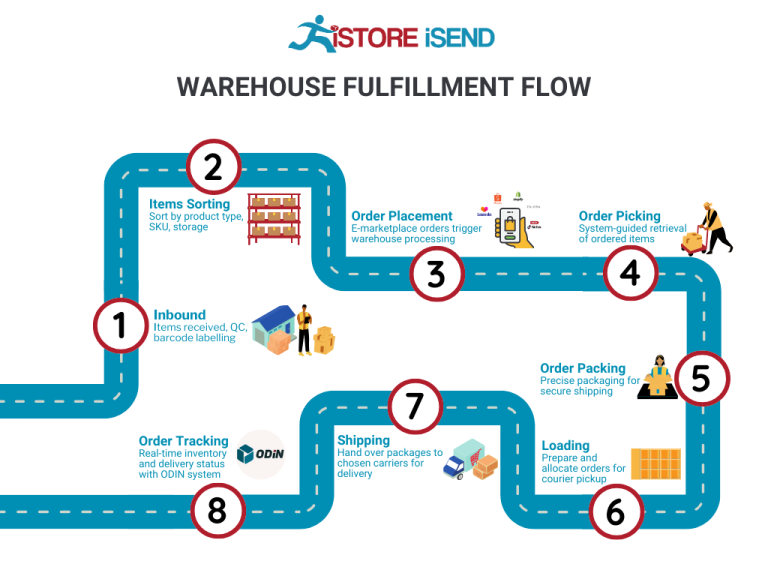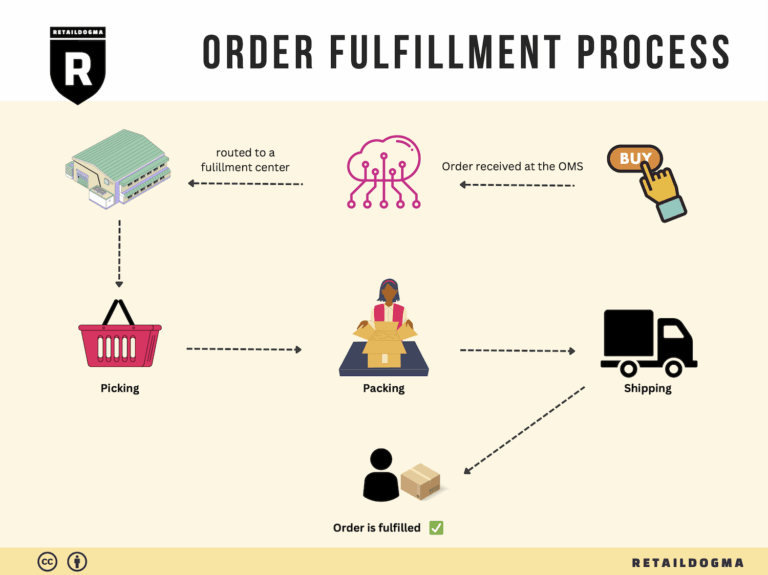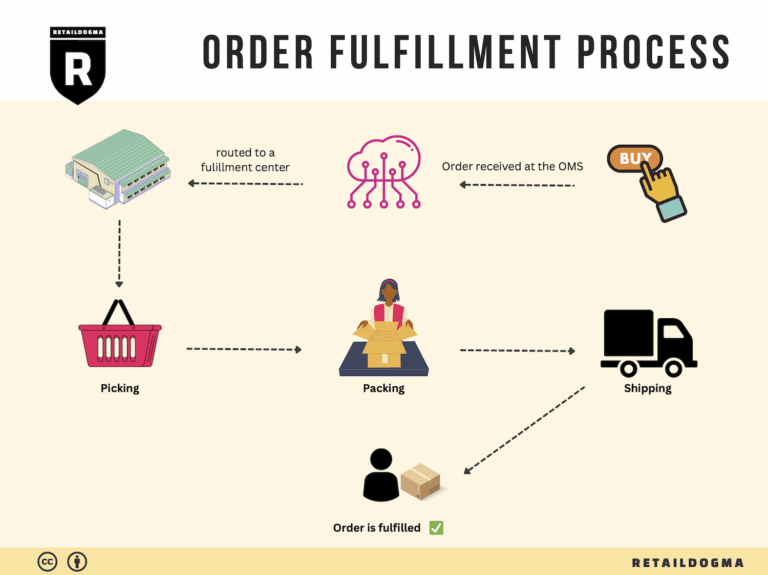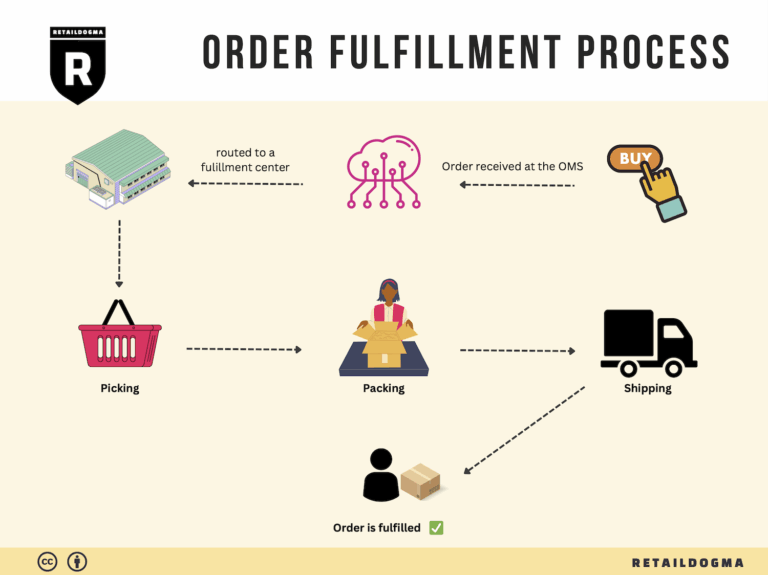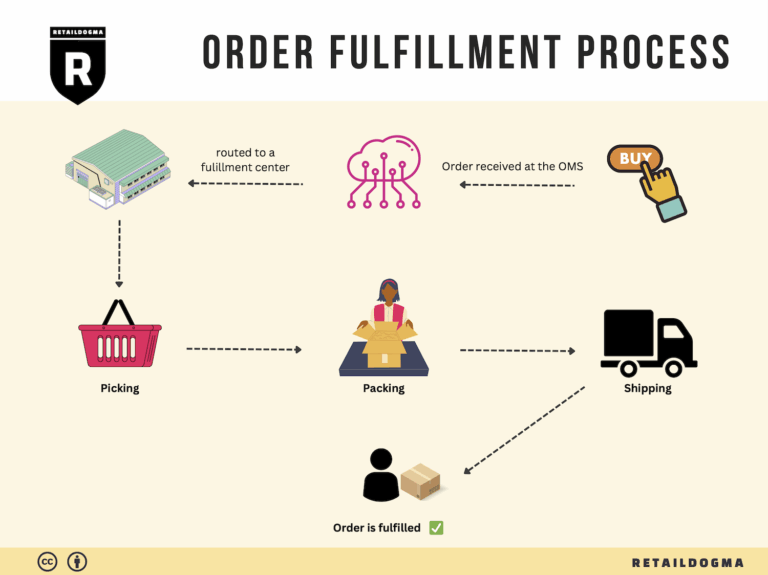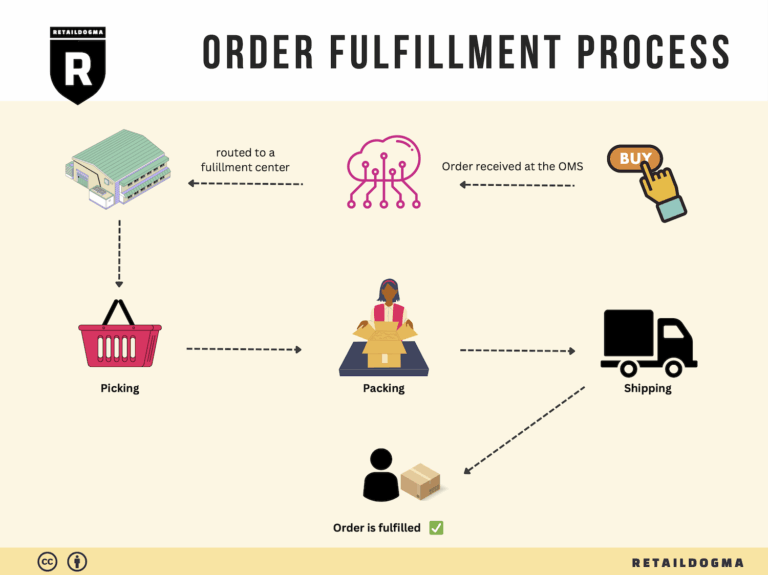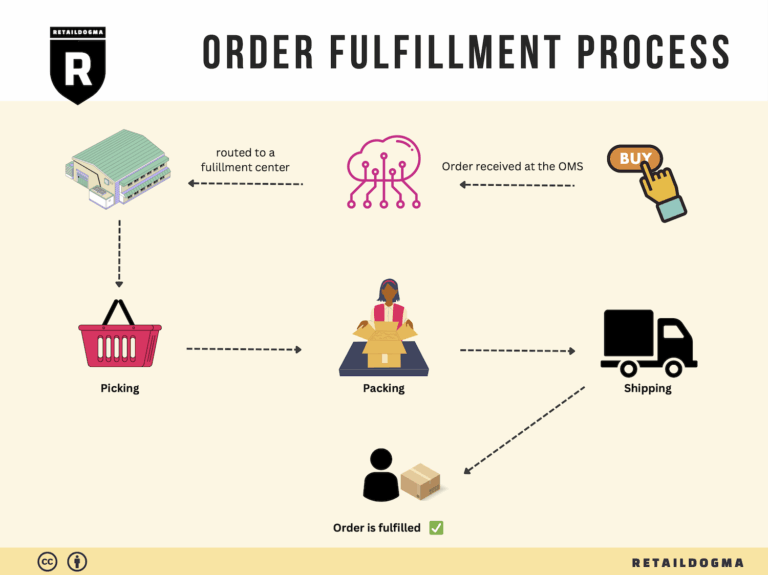Ecommerce Fulfillment Services: The Ultimate Guide (2025)
What is E-commerce Fulfillment? An Introduction for Growing Businesses
Understanding the Challenges of Order Management
For many growing e-commerce businesses, the excitement of expanding sales can quickly turn into a daunting challenge. As order volumes increase, so does the complexity of packing and shipping, often leading to overwhelm. Many entrepreneurs find themselves bogged down in the logistics of getting products out the door, which can detract from their core focus: growing their business. This is where e-commerce fulfillment comes into play.
What is E-commerce Fulfillment?
At its core, e-commerce fulfillment is the process of getting a product from your warehouse to your customer’s doorstep. This involves several critical steps, including inventory management, order processing, packing, shipping, and handling returns. As businesses scale, the need for efficient and effective fulfillment becomes paramount to maintaining customer satisfaction and streamlining operations.
What This Guide Will Cover
This comprehensive guide will delve into various aspects of e-commerce fulfillment that are essential for growing businesses. We’ll explore the different fulfillment models available, such as Third-Party Logistics (3PL) and Fulfillment by Amazon (FBA), to help you determine which is best suited for your needs.
Additionally, we’ll outline the core services typically offered by fulfillment providers, including:
- Pick and Pack: The process of selecting items from inventory and preparing them for shipment.
- Warehousing: Efficient storage solutions to keep your products safe and organized.
- Shipping: Strategies to reduce shipping costs while ensuring timely delivery.
- Returns Management: Handling returns effectively to maintain customer satisfaction.
Moreover, choosing the right fulfillment partner is critical. We’ll provide practical tips on what to look for in a logistics provider, including technology integration, customer support, and pricing structures.
Empowering Your Business Decisions
The ultimate goal of this guide is to empower you to make informed decisions about your logistics and fulfillment strategies. By understanding the intricacies of e-commerce fulfillment, you can streamline your operations, reduce costs, and improve the overall customer experience. As you navigate the complexities of scaling your business, having a solid grasp of fulfillment processes will be a key factor in achieving sustainable growth. Whether you’re just starting or looking to refine your existing operations, this guide aims to be a valuable resource in your journey toward e-commerce success.
What You’ll Learn In This Guide
- What is E-commerce Fulfillment? An Introduction for Growing Businesses
- The Order Fulfillment Process: From ‘Buy’ Button to Customer’s Door
- Comparing Fulfillment Models: In-House vs. 3PL vs. Dropshipping
- A Deep Dive into Amazon FBA: Pros, Cons, and Who It’s For
- Core Services Offered by Fulfillment Centers
- How to Choose a Fulfillment Partner: A 6-Point Checklist
- Understanding Fulfillment Pricing: A Breakdown of Common Fees
- Frequently Asked Questions (FAQs) about Fulfillment
- Conclusion: Is Outsourcing Fulfillment the Right Move for Your Business?
- Important Disclaimer
The Order Fulfillment Process: From ‘Buy’ Button to Customer’s Door
1. Receiving Inventory
The order fulfillment process begins with receiving inventory, a crucial step that sets the foundation for efficient operations. During this phase, products are delivered to the fulfillment center from manufacturers or suppliers. It’s essential to inspect the received goods against purchase orders to ensure accuracy and quality. This process typically involves checking for discrepancies in quantities, verifying product conditions, and documenting any damages or shortages.
A key term associated with this step is SKU (Stock Keeping Unit). Each product is assigned a unique SKU, allowing for easy tracking and management within the inventory system. Proper receiving procedures help prevent stockouts and overstock situations, which can disrupt sales and customer satisfaction. By meticulously managing inventory upon receipt, businesses can establish a reliable inventory baseline that supports future operations and enables accurate forecasting.
2. Warehouse Storage
Once inventory is received and verified, the next step is warehouse storage. Proper storage solutions are vital for maximizing space, ensuring product safety, and maintaining inventory accessibility. Effective warehouse management involves organizing products based on categories, sizes, or sales velocity to facilitate quick retrieval.
The concept of bin locations is essential here. Each SKU is assigned a specific bin or shelf location, which simplifies the picking process later on. Efficient warehouse storage not only minimizes the time spent locating products but also reduces the risk of damage. A well-organized warehouse contributes to improved operational efficiency, ultimately leading to faster order fulfillment and enhanced customer satisfaction.
3. Order Picking
Order picking is the critical process where items are selected from their storage locations based on customer orders. When an order is placed, a pick list is generated, detailing the SKUs and quantities needed for fulfillment. This step can be executed using various methods, including single-order picking, batch picking, or wave picking, depending on the volume of orders and the layout of the warehouse.
The pick list is a vital tool in this process, ensuring that warehouse staff retrieve the correct items efficiently. The accuracy and speed of order picking directly impact overall fulfillment performance. Mistakes made during this stage can lead to incorrect shipments, resulting in returns and customer dissatisfaction. Therefore, investing in technology such as barcode scanners or RFID systems can enhance picking accuracy and speed, contributing to a seamless customer experience.
4. Order Packing
After items are picked, they move to the packing station, where the order is carefully prepared for shipment. This step involves checking the items against the order details, packing them securely, and labeling the package for delivery. The packing process is not just about placing items in a box; it also includes creating a memorable unboxing experience for the customer.
A key term in this step is packaging materials. The choice of materials—such as boxes, bubble wrap, or biodegradable fillers—can impact shipping costs and the product’s safety during transit. Effective packing reduces the likelihood of damages, ensuring that customers receive their orders in excellent condition. Additionally, thoughtful packaging that reflects the brand can enhance customer satisfaction and encourage repeat purchases.
5. Shipping & Delivery
The final step in the order fulfillment process is shipping and delivery. Once the package is packed and labeled, it is handed over to a carrier for delivery. The choice of shipping method (e.g., standard, expedited, international) can significantly affect delivery times and costs. Businesses must navigate a network of shipping carriers, such as USPS, UPS, or FedEx, to find the most efficient options for their needs.
A crucial term here is tracking number. Each shipment is assigned a tracking number that allows both the business and the customer to monitor the package’s journey in real time. Providing customers with tracking information enhances transparency and builds trust, as they can see when to expect their orders. Effective shipping management can lead to improved customer satisfaction and loyalty, as timely deliveries are a key factor in the overall shopping experience.
By understanding and optimizing each step of the order fulfillment process—from receiving inventory to shipping and delivery—e-commerce businesses can scale operations effectively and enhance customer satisfaction, ultimately leading to sustained growth and success in the competitive online marketplace.
Comparing Fulfillment Models: In-House vs. 3PL vs. Dropshipping
Fulfillment Model Comparison
| Model | Who Handles Inventory | Best For (Business Stage) | Key Advantage | Key Disadvantage |
|---|---|---|---|---|
| In-House Fulfillment | Business Owner/Staff | Startups and Established | Full control over inventory and processes | High overhead costs and complexity |
| Third-Party Logistics (3PL) | 3PL Provider | Startups to Medium-sized | Scalable solutions with expert support | Less control over operations |
| Dropshipping | Supplier | Startups and Small Businesses | Low financial risk and inventory costs | Lower margins and longer shipping times |
In-House Fulfillment
In-house fulfillment refers to a model where the e-commerce business manages its own inventory, warehousing, and shipping processes. This approach allows for complete control over all aspects of order fulfillment, enabling businesses to customize their operations according to their specific needs. For startups and established businesses that value brand integrity and customer experience, in-house fulfillment can be a viable option. The primary advantage of this model is the direct oversight it provides, allowing businesses to fine-tune their inventory management, packing, and shipping processes. Additionally, businesses can create unique packaging and unboxing experiences that resonate with their brand identity. However, this model also comes with significant disadvantages, including high overhead costs associated with warehousing, staffing, and technology. As businesses scale, they may find it increasingly complex and resource-intensive to manage fulfillment in-house, leading to operational inefficiencies and potential service disruptions.
Third-Party Logistics (3PL)
Third-party logistics (3PL) involves partnering with a specialized service provider to handle various aspects of the fulfillment process, including inventory management, warehousing, order processing, and shipping. This model is best suited for startups and medium-sized businesses looking to scale without the burden of maintaining their own logistics infrastructure. The key advantage of utilizing a 3PL is access to expertise and technology that can enhance operational efficiency. 3PL providers often have established relationships with shipping carriers, allowing for better shipping rates and faster delivery times. Additionally, they can easily scale their services to accommodate fluctuating order volumes, making them an ideal partner for businesses anticipating growth. On the downside, businesses may experience a lack of control over their fulfillment processes, which can lead to inconsistencies in service quality. Moreover, partnering with a 3PL may require a commitment to long-term contracts, which could be a concern for businesses with uncertain growth trajectories.
Dropshipping
Dropshipping is a fulfillment model where the e-commerce retailer does not hold inventory; instead, they partner with suppliers who handle inventory and shipping directly to the customer. This model is particularly appealing for startups and small businesses due to its low financial risk and minimal upfront investment. Retailers can focus on marketing and customer engagement without the burden of managing inventory or shipping logistics. The primary advantage of dropshipping is the significantly reduced operational complexity and lower overhead costs, allowing businesses to allocate resources towards growth initiatives. However, dropshipping also has notable disadvantages, including lower profit margins since the retailer typically pays the supplier a wholesale price. Additionally, shipping times may be longer, as products often need to be shipped directly from the supplier to the customer. This can lead to customer dissatisfaction if not managed properly, and retailers may struggle to maintain consistent quality control over the products and shipping processes, as they have little oversight over their suppliers’ operations.
In conclusion, choosing the right fulfillment model depends on various factors, including the size of the business, growth expectations, and the level of control desired over operations. Each model has its unique advantages and challenges, and e-commerce business owners should carefully assess their specific needs and long-term goals when selecting a fulfillment strategy.
A Deep Dive into Amazon FBA: Pros, Cons, and Who It’s For
Understanding Fulfillment by Amazon (FBA)
Fulfillment by Amazon (FBA) is a service provided by Amazon that allows sellers to store their products in Amazon’s fulfillment centers. In turn, Amazon takes care of storage, packaging, and shipping of these products directly to customers. This service enables sellers to leverage Amazon’s vast logistics network and customer base, simplifying the fulfillment process while enhancing sales potential.
How FBA Works
-
Inventory Management: Sellers send their products to Amazon’s fulfillment centers. Once received, Amazon takes responsibility for managing the inventory, including tracking stock levels and handling restocking.
-
Order Processing: When a customer places an order for a product listed under FBA, Amazon picks, packs, and ships the item directly from their warehouse. They also handle customer service and returns, ensuring a seamless experience for buyers.
-
Shipping and Delivery: Products fulfilled by Amazon are eligible for Prime and other Amazon shipping options, which typically offer faster delivery times. This not only enhances customer satisfaction but can also lead to increased sales.
-
Returns Management: FBA takes the burden of returns off the seller’s shoulders. Amazon processes returns on behalf of the seller, ensuring that the process is straightforward for customers.
Pros of Using FBA
-
Prime Eligibility: Products fulfilled by Amazon are automatically eligible for Amazon Prime, which can significantly increase sales. Prime members often prefer items that qualify for free two-day shipping, enhancing your product’s visibility and appeal.
-
Customer Trust: Leveraging Amazon’s brand can enhance your credibility as a seller. Customers often feel more confident purchasing items fulfilled by Amazon, knowing they will receive reliable service and support.
-
Multi-Channel Fulfillment: FBA allows sellers to use Amazon’s logistics network for orders placed on other platforms, such as eBay or their own website. This flexibility can streamline operations and reduce fulfillment complexities across multiple sales channels.
-
Scalability: FBA is designed to accommodate growth. As your business expands, you can easily increase your inventory levels in Amazon’s warehouses without needing to invest in your own logistics infrastructure.
-
Focus on Core Business: By outsourcing fulfillment to Amazon, sellers can focus on other critical aspects of their business, such as product development, marketing, and customer engagement, rather than logistics management.
Cons of Using FBA
-
High Fees: FBA comes with various fees, including storage fees for your inventory and fulfillment fees per item sold. These costs can accumulate, particularly if your products have a low turnover rate, impacting your overall profit margins.
-
Strict Inventory Rules: Amazon enforces strict guidelines regarding inventory management. Sellers must adhere to these rules, including limits on storage space and requirements for labeling and packaging, which can be cumbersome and time-consuming.
-
Commingling Risks: FBA products from different sellers may be stored together in the same warehouse, a practice known as commingling. This can pose risks, such as receiving damaged or incorrect products, which can negatively affect your seller rating and customer satisfaction.
-
Loss of Control: By using FBA, sellers relinquish some control over the fulfillment process. This includes aspects like branding in packaging and customer interactions, which can limit how sellers present their business to customers.
-
Inventory Limits: Amazon imposes inventory limits based on sales history and performance metrics. New sellers, in particular, may find themselves restricted in how much inventory they can send to Amazon, which can hinder growth potential.
Who is FBA Best For?
Fulfillment by Amazon is ideal for a variety of sellers, particularly those who are looking to scale their e-commerce operations without the overhead of managing their own fulfillment centers. Here are some profiles of businesses that might benefit most from FBA:
-
Small to Medium-Sized Businesses: Those looking to grow their sales without investing heavily in logistics infrastructure can leverage FBA to reach a broader audience.
-
E-commerce Startups: New businesses that may not have the resources to handle warehousing, shipping, and customer service can benefit from FBA’s comprehensive solutions.
-
Brands Seeking Visibility: Sellers who want to enhance their brand visibility and credibility on Amazon can take advantage of FBA’s customer trust and Prime eligibility.
-
Seasonal Sellers: Businesses that experience fluctuations in demand, such as holiday products, can utilize FBA to manage inventory more effectively without long-term storage commitments.
-
Sellers with Diverse Product Lines: If you have a broad range of products, FBA can simplify logistics and inventory management, allowing you to focus on growth and innovation.
In conclusion, Fulfillment by Amazon offers a powerful solution for e-commerce sellers aiming to streamline their operations and expand their market reach. However, it is essential to weigh the benefits against the potential drawbacks, especially concerning fees and control over inventory management. By understanding the nuances of FBA, sellers can make informed decisions about whether it aligns with their business objectives and operational capabilities.
Core Services Offered by Fulfillment Centers
Inventory Management & Warehousing
Inventory management and warehousing are fundamental services provided by fulfillment centers that ensure e-commerce businesses can efficiently store and track their products. This service involves the systematic control of inventory levels, locations, and conditions, allowing businesses to maintain optimal stock levels without overcommitting resources.
Benefits:
– Cost Efficiency: By utilizing a fulfillment center’s warehousing capabilities, e-commerce businesses can reduce costs associated with maintaining their own storage facilities. This includes savings on rent, utilities, and labor.
– Real-Time Inventory Tracking: Advanced inventory management systems provide real-time visibility into stock levels, enabling businesses to respond quickly to changes in demand. This reduces the risk of stockouts or overstock situations, which can lead to lost sales or increased holding costs.
– Scalability: As businesses grow, fulfillment centers can easily accommodate increased inventory without the need for businesses to invest in additional warehouse space or management systems. This flexibility allows for seamless scaling of operations.
Pick and Pack Services
Pick and pack services are a critical component of the order fulfillment process, where fulfillment centers efficiently select items from inventory (picking) and prepare them for shipment (packing). This process is designed to ensure that orders are fulfilled accurately and promptly, which is vital for maintaining customer satisfaction.
Benefits:
– Accuracy and Speed: Fulfillment centers typically employ trained staff and sophisticated technology to enhance accuracy in picking and packing orders. This leads to a high order accuracy rate, minimizing errors and returns due to incorrect items being shipped.
– Custom Packaging Options: Many fulfillment centers offer custom packaging solutions that enhance the unboxing experience for customers. By including branded boxes, personalized messages, or promotional materials, businesses can strengthen their brand identity and improve customer loyalty.
– Time Savings: Outsourcing pick and pack operations allows e-commerce businesses to focus on core activities such as product development and marketing. This can significantly reduce lead times and improve overall operational efficiency.
Kitting and Assembly
Kitting and assembly services involve grouping individual items into ready-to-ship kits or assembling products before they are shipped to customers. This service is particularly beneficial for businesses that sell products requiring assembly or those that offer bundled items.
Benefits:
– Enhanced Product Offerings: Kitting allows businesses to create bundled offers, which can increase average order value and attract more customers. For example, a business might combine a product with complementary accessories to create a complete package.
– Efficiency in Order Fulfillment: By pre-assembling products or kits, fulfillment centers streamline the order fulfillment process. This means orders can be shipped faster, which is increasingly important in the competitive e-commerce landscape where customers expect quick delivery.
– Reduced Handling Errors: When items are assembled into kits before they are ordered, there is a lower chance of errors occurring during the packing process. This leads to higher customer satisfaction and fewer returns.
Returns Management (Reverse Logistics)
Returns management, or reverse logistics, is the process of handling returned goods, including their inspection, restocking, and disposition. This service is essential for e-commerce businesses, as returns are a common occurrence in online retail.
Benefits:
– Streamlined Return Process: Fulfillment centers provide a systematic approach to handling returns, ensuring that the process is efficient and hassle-free for both the business and the customer. A well-managed return process can enhance customer trust and satisfaction, leading to repeat business.
– Inventory Control: By managing returns effectively, fulfillment centers help businesses quickly reintegrate returned items back into inventory. This minimizes lost sales opportunities and allows for better inventory management.
– Data Insights: Returns management services often include detailed reporting and analytics, providing insights into return reasons and trends. This information can be invaluable for e-commerce businesses looking to improve product quality, adjust marketing strategies, or refine inventory planning.
In summary, fulfillment centers offer a suite of core services that are vital for the success of e-commerce businesses. By leveraging inventory management, pick and pack services, kitting, and returns management, businesses can streamline their operations, enhance customer satisfaction, and ultimately drive growth. Partnering with a reliable fulfillment center can free up resources, allowing e-commerce owners to focus on scaling their business and expanding their market reach.
How to Choose a Fulfillment Partner: A 6-Point Checklist
Location & Warehouse Network
Importance: The geographical location of your fulfillment partner can significantly impact shipping times and costs. A partner with a strategic warehouse network allows for faster delivery to your customers, which is critical for maintaining satisfaction and reducing cart abandonment.
Questions to Ask:
– Where are your warehouses located, and how do they align with my target market?
– Do you have multiple fulfillment centers, and can you ship from the closest location to the customer?
– What is your average shipping time to key regions, and how do you handle shipping during peak seasons?
Technology & Integrations
Importance: In today’s digital landscape, seamless technology integration is vital for efficient operations. A partner with robust technology can automate processes, manage inventory in real-time, and provide visibility into order statuses.
Questions to Ask:
– What fulfillment software do you use, and how does it integrate with popular e-commerce platforms like Shopify, WooCommerce, or Amazon?
– Do you offer real-time inventory tracking and reporting tools?
– How do you handle data security, and what measures are in place to protect sensitive customer information?
Specializations (e.g., Cold Storage, Oversized Items)
Importance: Depending on your product line, specific capabilities may be necessary. For instance, if you sell perishable goods, a partner with cold storage facilities is essential. Similarly, businesses dealing with oversized items need a partner experienced in handling such products.
Questions to Ask:
– What types of products do you specialize in fulfilling?
– Do you have the necessary facilities and equipment for my specific product types (e.g., temperature control, kitting, or assembly)?
– Can you manage returns for specialized products, and how do you handle damaged items?
Scalability & Capacity
Importance: As your business grows, your fulfillment needs will likely change. A partner that can scale with you will help avoid disruptions in service and ensure that you can meet customer demand without delays.
Questions to Ask:
– How do you handle fluctuations in order volume, particularly during peak seasons?
– What is your capacity for scaling operations, and how quickly can you accommodate increased demand?
– Do you have contingency plans in place for unexpected spikes in orders or supply chain disruptions?
Pricing and Contracts
Importance: Understanding the pricing structure and contract terms is crucial for budgeting and financial planning. Transparent pricing without hidden fees ensures you can maintain profitability while offering competitive shipping rates.
Questions to Ask:
– Can you provide a detailed breakdown of your pricing structure, including any additional fees for services like storage, kitting, or returns?
– Are there any long-term contracts or minimum order requirements?
– How do you handle pricing adjustments during contract renewals or if my business scales significantly?
Customer Support & Reviews
Importance: Exceptional customer support can make a significant difference in your fulfillment experience. A partner who is responsive and proactive can help resolve issues quickly, minimizing disruptions to your business.
Questions to Ask:
– What is your customer support structure, and how can I reach you in case of an urgent issue?
– Can you provide references or case studies from similar businesses that have worked with you?
– How do you handle customer complaints or service failures, and what is your process for continuous improvement?
By carefully evaluating these six critical aspects, you can make a well-informed decision when selecting a fulfillment partner. A strategic partnership in fulfillment can drive your e-commerce growth, enhance customer satisfaction, and streamline your logistics, allowing you to focus on scaling your business effectively.
Understanding Fulfillment Pricing: A Breakdown of Common Fees
Initial Setup Fees
Initial setup fees are charges that some fulfillment centers impose when you first start using their services. These fees cover the costs associated with onboarding your business, which may include account setup, integration with your e-commerce platform, and initial training for your team. The amount can vary significantly between providers; some may offer free setup, while others might charge a flat fee ranging from $50 to several hundred dollars.
To avoid unexpected costs, it’s essential to clarify what the setup process entails and whether there are any associated fees. Many modern fulfillment centers have streamlined their onboarding processes, so it’s worth exploring options that offer a no-cost setup to help you get started without a financial burden.
Receiving Fees
Receiving fees are incurred when your inventory arrives at the fulfillment center. This fee covers the labor and resources required to unload, inspect, and store your products. Typically calculated on a per-pallet or per-box basis, these fees can range from $10 to $30 per pallet, depending on the complexity of the receiving process and the volume of inventory being handled.
To minimize receiving fees, consider consolidating shipments or negotiating with your fulfillment partner for volume discounts. Clear communication about your inventory’s arrival and ensuring that shipments are properly labeled can also help streamline the receiving process, potentially reducing costs.
Storage Fees (per pallet/bin)
Storage fees are ongoing charges for keeping your inventory in the fulfillment center. These fees are usually calculated on a per-pallet or per-bin basis and can vary based on the size and weight of the items being stored. Rates typically range from $15 to $50 per month per pallet. Some providers may also have tiered pricing based on the total volume of inventory stored.
To optimize storage costs, regularly review your inventory levels and turnover rates. Implementing a just-in-time inventory strategy can help reduce excess stock and associated storage fees. Additionally, inquire about seasonal pricing adjustments, as some fulfillment centers may offer lower rates during off-peak months.
Pick & Pack Fees (per item/order)
Pick and pack fees are charged for the labor involved in selecting items from inventory and preparing them for shipment. These fees can be calculated per item or per order, with typical costs ranging from $0.50 to $3.00 per item or $1.00 to $5.00 per order, depending on the complexity of the packing process and the number of items included.
To manage pick and pack fees effectively, consider streamlining your product offerings and reducing the number of SKUs. This can lead to more efficient packing processes and lower fees. Additionally, work with your fulfillment partner to establish a clear understanding of their pick and pack processes, as this can help you identify opportunities for cost savings.
Shipping Fees
Shipping fees are the costs associated with transporting your products to customers. These fees vary widely based on factors such as package dimensions, weight, shipping destination, and chosen carrier. Fulfillment centers often negotiate discounted shipping rates with carriers, which can be passed on to you. However, the final shipping costs will still depend on your specific shipping requirements.
To get the best shipping rates, leverage the volume of orders you process. Many fulfillment partners offer tiered pricing based on shipping volume, allowing you to take advantage of lower rates as you scale. Additionally, consider offering customers a variety of shipping options at checkout, which can help offset costs and improve customer satisfaction.
Tips for Getting an Accurate Quote
When seeking a fulfillment partner, obtaining an accurate quote is crucial for budgeting and planning. Here are some tips to ensure you get the most precise estimate:
-
Provide Detailed Information: Clearly outline your product types, average order volume, and any special handling requirements to help the fulfillment provider give you a tailored quote.
-
Ask About Hidden Fees: Inquire about any additional costs that may not be included in the initial quote, such as returns processing or special packaging.
-
Request a Breakdown of Costs: Ask for a detailed itemization of fees, including setup, receiving, storage, pick and pack, and shipping costs.
-
Compare Multiple Providers: Don’t settle for the first quote you receive. Compare multiple fulfillment centers to find the best fit for your needs.
-
Negotiate Terms: Once you have a clear understanding of the fees, don’t hesitate to negotiate terms, especially if you anticipate high order volumes or long-term partnerships.
By understanding these common fulfillment fees and how they are calculated, you can make informed decisions that will help your e-commerce business scale efficiently while managing costs effectively.
Frequently Asked Questions (FAQs) about Fulfillment
1. What is eCommerce fulfillment?
eCommerce fulfillment refers to the complete process of receiving, processing, and delivering online orders to customers. This includes managing inventory, picking and packing products, shipping orders, and handling returns. Efficient fulfillment is crucial for customer satisfaction and can significantly impact a business’s reputation and sales.
2. What is a 3PL?
A Third-Party Logistics (3PL) provider is a company that offers outsourced logistics services, including warehousing, transportation, and fulfillment. By partnering with a 3PL, eCommerce businesses can focus on their core operations while leveraging the expertise and resources of logistics specialists to handle their supply chain needs.
3. How much do fulfillment services cost?
Fulfillment service costs can vary widely based on factors such as order volume, storage space, shipping methods, and additional services like kitting or returns management. Typically, fulfillment providers charge a per-order fee, storage fees for inventory, and shipping costs. It’s essential to request quotes from multiple providers to compare pricing structures and find the best fit for your business.
4. What’s the difference between a warehouse and a fulfillment center?
While both warehouses and fulfillment centers are used for storing goods, they serve different purposes. A warehouse primarily focuses on storing inventory, whereas a fulfillment center is designed to efficiently process and ship orders directly to customers. Fulfillment centers often have advanced technology for order management and may offer additional services such as packing and returns processing.
5. How do I choose the right fulfillment partner?
When selecting a fulfillment partner, consider their experience, service offerings, technology capabilities, and customer support. Look for a provider that aligns with your business needs, can handle your product types, and offers scalability as your business grows. Additionally, read reviews and seek recommendations from other eCommerce businesses to gauge their reliability and service quality.
6. Can I integrate my eCommerce platform with a fulfillment service?
Yes, most modern fulfillment services offer integration with popular eCommerce platforms and shopping carts. This allows for seamless order processing, inventory management, and real-time tracking. Before choosing a fulfillment partner, confirm that they can integrate with your existing systems to ensure a smooth workflow.
7. How does order tracking work in fulfillment services?
Order tracking is typically facilitated through the fulfillment provider’s technology platform. Once an order is placed, the system generates a tracking number that is sent to the customer. This allows both the business and the customer to monitor the order’s progress from dispatch to delivery, enhancing transparency and customer satisfaction.
8. What are the benefits of using a fulfillment service?
Using a fulfillment service can lead to several benefits, including reduced shipping costs, faster delivery times, improved order accuracy, and the ability to scale operations without significant upfront investments in warehousing or logistics. Additionally, outsourcing fulfillment allows businesses to focus on marketing, product development, and customer engagement.
9. How do fulfillment services handle returns?
Fulfillment services typically offer a returns management process that includes receiving returned items, inspecting their condition, restocking inventory, and updating inventory levels in real-time. Many providers also offer customized return policies to align with your business’s brand and customer expectations, ensuring a seamless returns experience.
10. Is there a minimum order requirement with fulfillment services?
Many fulfillment providers, especially those catering to small and medium-sized businesses, do not impose minimum order requirements. This flexibility allows eCommerce businesses to scale operations without the pressure of meeting high order thresholds, making it easier to manage fluctuating sales volumes.
Conclusion: Is Outsourcing Fulfillment the Right Move for Your Business?
Evaluating the Right Fulfillment Strategy for Your Business
Outsourcing fulfillment can be a game-changer for e-commerce businesses, offering numerous advantages that can directly impact your bottom line. By partnering with a third-party logistics (3PL) provider, you can save valuable time and resources. This allows you to concentrate on core business activities, such as marketing and product development, rather than getting bogged down in the complexities of order processing and shipping logistics.
One of the most significant benefits of utilizing fulfillment services is scalability. As your business grows, so do your shipping needs. A reliable fulfillment partner can adapt to fluctuations in order volume, ensuring that you maintain high service levels without the burden of managing increased operational demands. This flexibility is crucial for navigating peak seasons and unexpected growth spurts, enabling you to scale fearlessly.
Moreover, working with a fulfillment expert brings specialized knowledge and technology to your operations. These providers typically have established relationships with shipping carriers, access to advanced inventory management systems, and best practices honed over years of experience. This expertise can lead to cost savings and improved efficiency, ultimately enhancing your customer satisfaction and retention rates.
However, the benefits of outsourcing fulfillment are only as good as the partner you choose. It’s essential to conduct thorough due diligence and select a fulfillment service that aligns with your business goals and values. Look for a partner that prioritizes customer service, transparency, and reliability.
Take Action Today
To determine if outsourcing fulfillment is the right move for your business, start with an audit of your current shipping processes. Evaluate your operational efficiency, costs, and customer feedback. This assessment will provide valuable insights into whether a fulfillment partner could enhance your logistics strategy and drive growth. Don’t hesitate to explore the options available—your next strategic move could be just a conversation away.
Important Disclaimer
⚠️ Important Disclaimer
The information in this guide is for educational purposes. Fulfillment services, pricing, and platform features change frequently. Always conduct your own due diligence and consult with providers directly before making business decisions.
